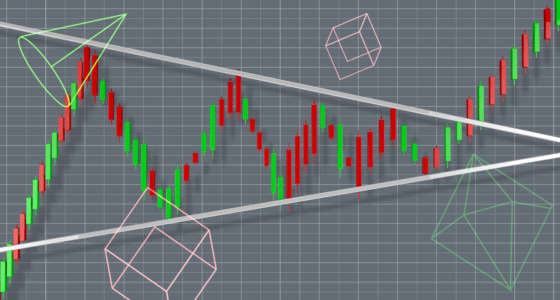

Financial analysis plays a crucial role in managing a business by providing insights into a company’s economic performance. It helps owners, stakeholders, and investors make informed decisions. One important financial tool is horizontal analysis, also known as trend analysis. This technique compares data from different periods to assess a company’s financial health and stability. In this article, we will explore the key aspects of horizontal analysis.
What is horizontal analysis?
Horizontal analysis is a technique used to evaluate a company’s performance over time by comparing data from different periods. This analysis involves comparing financial data from consecutive periods, such as years, quarters, or months. The goal is to identify trends and patterns in a company’s financial performance and gain insight into its future performance.
Horizontal analysis compares various financial data, including revenue, expenses, profits, and assets. By calculating the difference between current and prior periods and expressing it as a percentage increase or decrease, analysts can observe how the financial data has changed over time and identify any trends or patterns.
Horizontal analysis is widely used in financial analysis because it provides a quick and easy way to assess a company’s performance over time. It is an essential tool for investors, analysts, and company managers as it provides valuable information about a company’s financial health and growth potential.
However, it is important to note that horizontal analysis is just one part of a comprehensive financial analysis. It should be used in conjunction with other financial techniques, such as vertical and ratio analysis.
How does it work?
The process of horizontal analysis begins with collecting consistent and comparable financial data for a specified period. Once the data is collected, the next step is to calculate the change in the company’s financial performance over that period. This calculation results in a percentage increase or decrease, which helps determine the company’s financial performance trend.
To perform a horizontal analysis, follow these steps:
- Collect Financial Data: Gather the financial data for the specified period.
- Determine the Comparison Period: Choose the financial statement to analyze and select the comparison period. It is advisable to compare the current financial statement with the previous one to identify trends.
- Calculate the Change: Subtract the current financial statement from the previous one to calculate the change.
- Express the Change as a Percentage: Convert the change into a percentage increase or decrease to better understand the company’s financial performance trend.
- Analyze the Results: Identify patterns and trends in the financial data and determine whether the company’s performance is improving or declining.
Horizontal vs. vertical analysis: a comprehensive comparison
Let’s highlight the key differences between horizontal and vertical analysis:
- Definition: Horizontal analysis compares financial data over a specified period, while vertical analysis compares financial data within the same financial statement.
- Period: Horizontal analysis evaluates the change in financial performance over a specific period, while vertical analysis assesses the proportion of different components within the same financial statement.
- Purpose: Horizontal analysis aims to understand the company’s financial performance trend, while vertical analysis focuses on the composition of the financial statement.
- Comparison: Horizontal analysis compares financial data between two or more periods, while vertical analysis compares different components within the same financial statement.
- Result: Horizontal analysis provides a percentage increase or decrease in financial performance, while vertical analysis shows the proportion of each component relative to the total.
- Information: Horizontal analysis reveals information about the company’s financial performance trend, while vertical analysis provides insights into the composition of the financial statement.
- Financial Statements: Horizontal analysis can be applied to various financial statements, including the balance sheet, income statement, and cash flow statement. Vertical analysis is typically used for the balance sheet and income statement.
- Investment Decisions: Investors use horizontal analysis to determine the trend of a company’s financial performance and make informed investment decisions. Vertical analysis helps understand the composition of the financial statement and assess the stability of the business’s financial position.
- Business Operations: Business owners can use horizontal analysis to understand the company’s financial performance trend and identify areas for improvement. Vertical analysis is usually utilized to comprehend the composition of the financial statement and make informed business decisions.
In conclusion, horizontal and vertical analysis are valuable financial tools that provide important information. The choice of technique depends on the specific goals and needs of the business or investor.

Criticism of horizontal analysis
While horizontal analysis provides valuable information on a company’s financial performance trend, it has some limitations. Let’s go through the criticism of horizontal analysis:
- Reliance on Historical Data: Horizontal analysis relies heavily on historical data, which may not always represent future performance. Economic conditions, market trends, and company strategy can significantly impact financial performance, making it difficult to predict future trends based on past data.
- Ignores External Factors: Horizontal analysis does not consider external factors that may impact financial performance, such as changes in the economy, competitive landscape, and regulatory environment. This narrow focus on internal data can lead to an incomplete picture of a company’s financial performance.
- Limited Scope: Horizontal analysis only evaluates financial data over a specified period, which may not be sufficient to comprehensively analyze a company’s financial performance. A broader, multi-year analysis may be required to understand the firm’s financial trends and patterns fully.
- Data Selection Bias: Horizontal analysis may be subject to data selection bias, where the data selected for analysis is not representative of the company’s overall financial performance. This can lead to incorrect conclusions and decision-making based on inaccurate information.
- Limited to Comparative Analysis: Horizontal analysis is limited to comparative analysis and does not provide a comprehensive picture of a business’s financial performance. A combination of horizontal and vertical analysis, as well as other techniques, may be required to gain a complete understanding.
- Data Integrity: Horizontal analysis is only as accurate as the data used. If the financial data is incorrect or not up-to-date, the horizontal analysis results will also be false.
Example of horizontal analysis
A retail company has been in business for five years and wants to evaluate its financial performance over that period. The firm has prepared the following income statement:
Year 1: $100,000.
Year 2: $120,000.
Year 3: $130,000.
Year 4: $140,000.
Year 5: $150,000.
To perform a horizontal analysis, the company will calculate the percentage increase or decrease in its revenue from one year to the next. For example, comparing Year 2 to Year 1:
(Revenue in Year 2 – Revenue in Year 1) / Revenue in Year 1 = (120,000 – 100,000) / 100,000 = 0.20 or 20% increase.
The business can then calculate the percentage increase or decrease for each year, resulting in the following:
Year 1 to Year 2: 20% increase.
Year 2 to Year 3: 8.33% increase.
Year 3 to Year 4: 7.69% increase.
Year 4 to Year 5: 7.14% increase.
From this horizontal analysis, the company can see that its revenue has consistently increased, with a slower rate of increase in more recent years. This information can help the business determine if its revenue growth is slowing down and if it needs to take action to improve its financial performance.
FAQs
To better understand the topic, we have prepared answers to the most frequently asked questions.
What is the horizontal analysis used for?
Horizontal analysis is a financial technique designed to evaluate the change in economic performance over a specified period. Its primary purpose is to understand the company’s financial performance trend by comparing the current and previous financial statements.
How is horizontal analysis calculated?
The first step to calculate the horizontal analysis is to collect financial data for the specified period. The change in economic performance is then calculated by subtracting the current financial statement from the previous one. The result is expressed as a percentage increase or decrease.
What is the difference between horizontal and vertical analysis?
Horizontal and vertical analysis are different techniques used to evaluate a business’s financial performance. The primary difference between them is how the two compare financial data. Horizontal analysis compares it over a specified period, while vertical analysis does it within the same financial statement.
What are the benefits of horizontal analysis?
The benefits of horizontal analysis include clearly understanding the company’s financial performance trend, identifying patterns and trends in economic data, and determining if the business is improving or declining in performance. The analysis can also help identify areas that need improvement and make informed business decisions.
How can an investor use horizontal analysis?
Investors can use horizontal analysis to determine the company’s financial performance trend and make intelligent investment decisions. Horizontal analysis can also help identify potential risks and opportunities and assess the company’s stability.
When can horizontal analysis be used?
It is commonly used to analyze financial statements at the end of the financial year, but it can also be applied to evaluate financial performance throughout the year.
The bottom line
Horizontal analysis is a powerful financial analysis tool that provides valuable insights into an organization’s financial performance. It can help business owners, stakeholders, and investors make informed decisions by comparing data over a specified period and identifying patterns and trends in financial performance. Whether used for investment purposes or to improve business operations, horizontal analysis is essential for understanding a company’s financial health.







